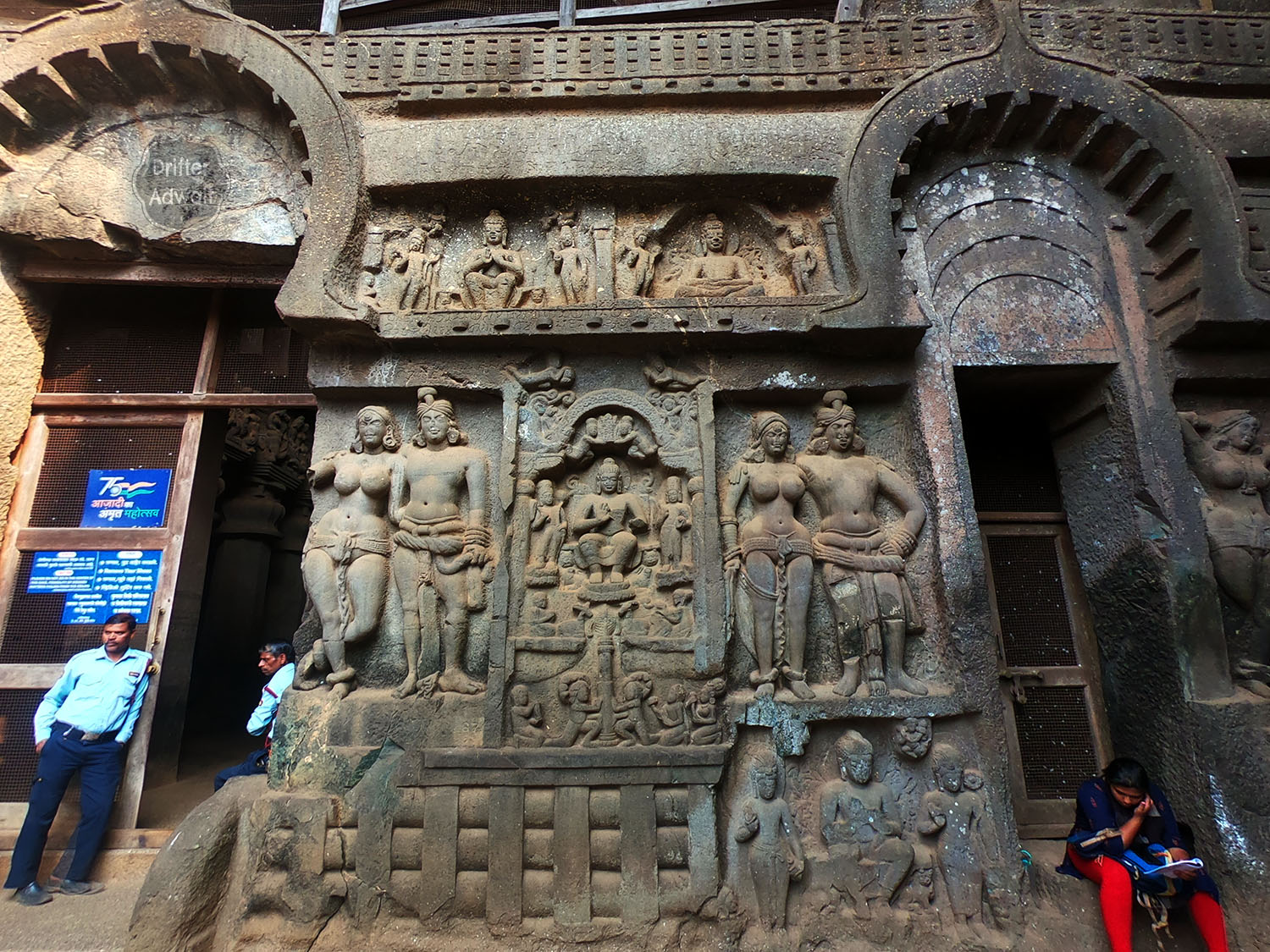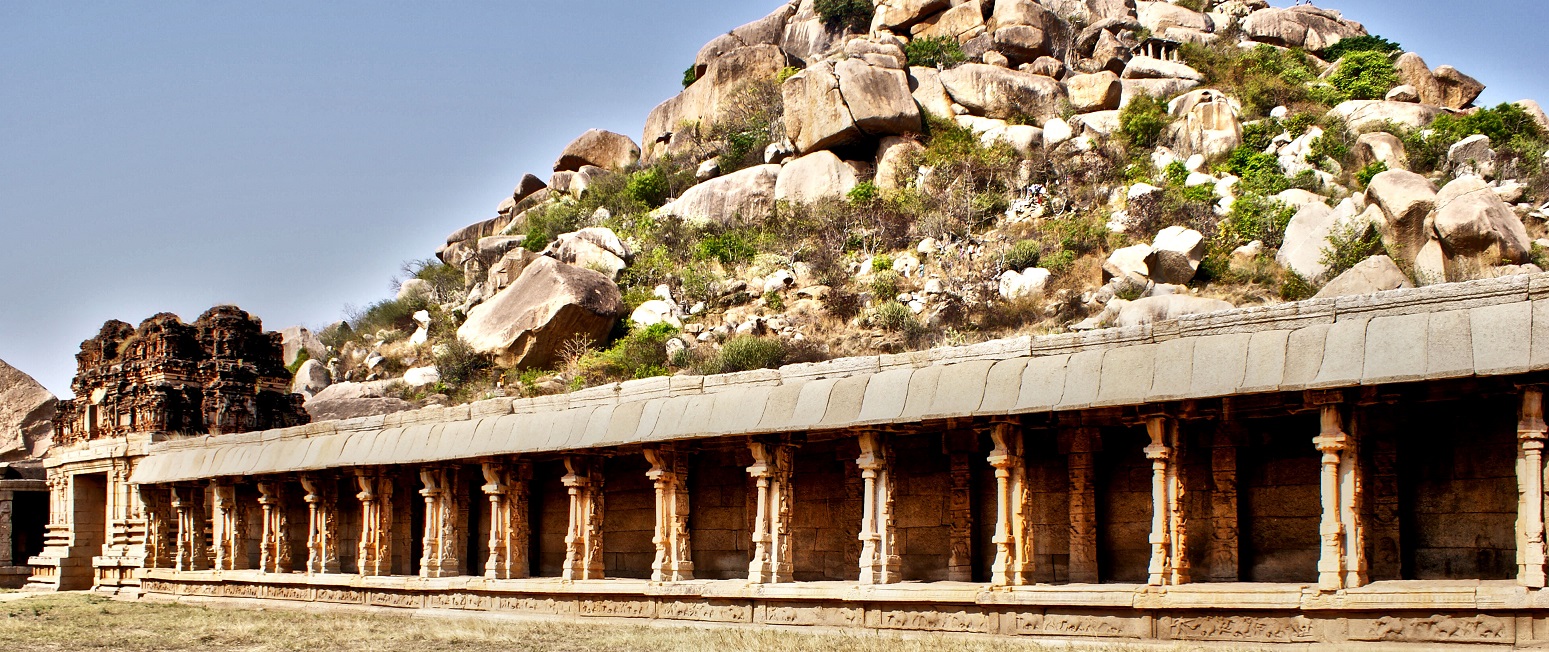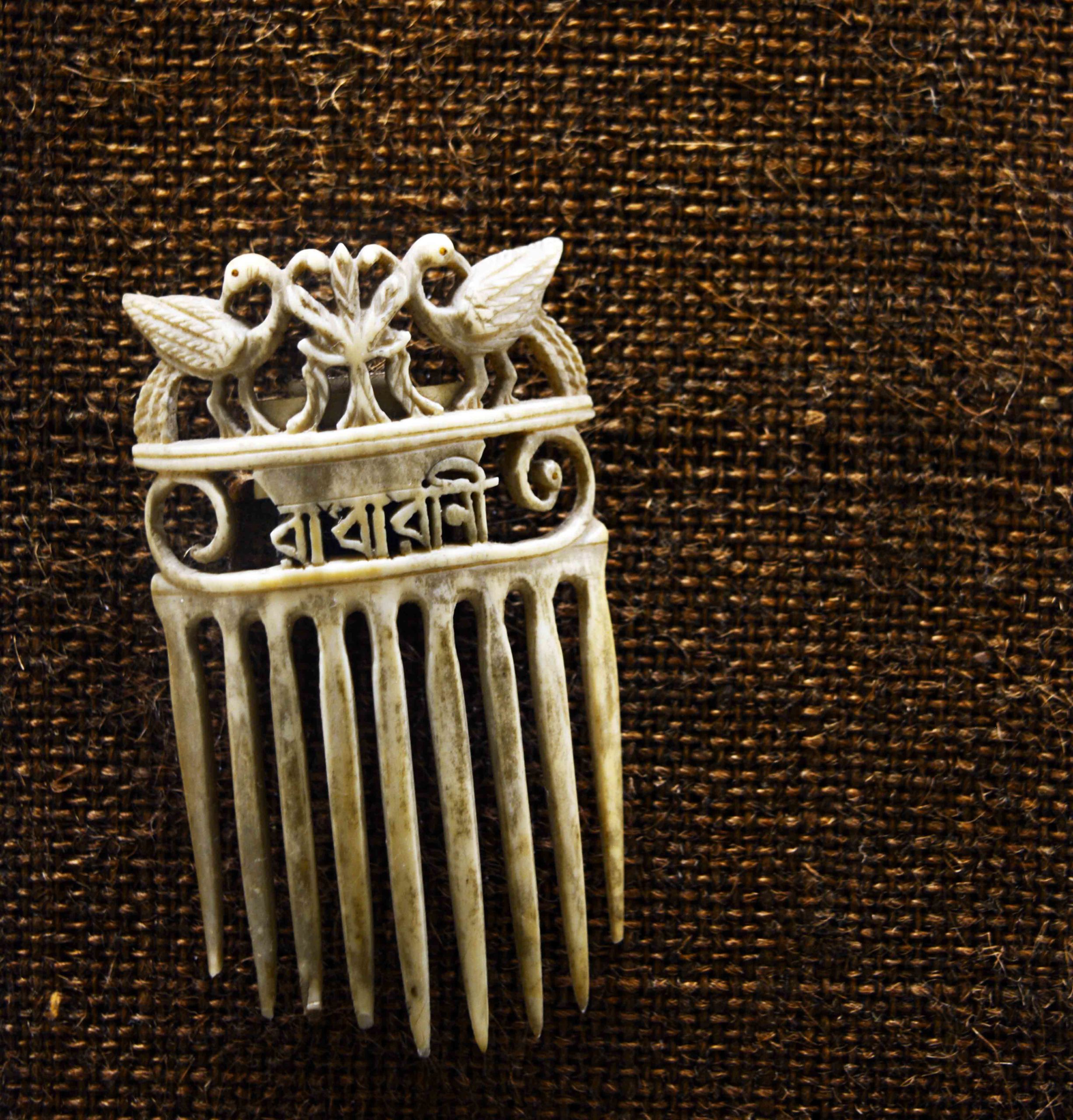India, that is Bharat, is enriched with thousands of years of rich heritage and culture. With their indomitable spirit, our ancestors crafted awe-inspiring marvels that have stood the test of time, their creations resonating with the echoes of their blood, sweat, and tears. These majestic monuments and sites carry the weight of history, a testament to human ingenuity and devotion.
However, let us pause and reflect: What have we, as custodians of this precious legacy, done to honor and safeguard these treasures? Regrettably, during weekends, swarms of overcrowded masses converge upon these once tranquil historical sites, transforming them into mere meeting spots, selfie havens, and corners strewn with discarded food wrappers. Or worst, we turn them into a religious places, gathering more crowds, pushing each other, and disturbing the peace and sanctity of the place. One such place is Karla Caves.
Karla caves in a Nutshell

Ancient Rock-Cut Caves: Karla Caves is an ancient rock-cut cave complex near Lonavala, Maharashtra, India. They date back to the 2nd century BCE and 5th century CE, making them around 2,000 years old.
Buddhist Heritage: The caves hold immense significance in Buddhist history and culture. They were used as Buddhist monastic complexes, providing shelter, meditation halls, and spaces for religious activities.
Architectural Marvel: Karla Caves showcase remarkable rock-cut architecture. Skilled craftsmen carved the caves from a single rock hillside, creating intricate details, sculptures, and ornate pillars.
Great Chaitya Hall: The highlight of Karla Caves is the Great Chaitya Hall, one of India’s largest rock-cut Chaitya halls. It features a magnificent facade with a towering horseshoe-shaped entrance and intricate carvings.
Stupendous Stupas: The caves are adorned with beautifully carved stupas (hemispherical structures) representing the presence of Buddha. These stupas are intricately designed and create a serene ambiance.
Ornate Carvings: Explore the walls of Karla Caves, adorned with exquisite carvings depicting various scenes from Buddhist mythology and symbols of the Buddhist faith. The attention to detail is awe-inspiring.
Intriguing Pillars: The caves boast intricately carved pillars that add to the grandeur of the architecture. These pillars showcase unique motifs and architectural styles of the time.
Scenic Location: Karla Caves are amidst picturesque surroundings, offering stunning views of the Sahyadri mountain range and the lush green valleys below. The natural beauty of the location enhances the overall experience.
Trekking Destination: Accessible via a picturesque trek, Karla Caves attract adventure enthusiasts and nature lovers. The trekking route offers captivating views and an opportunity to connect with nature.
Ekvira Devi Temple: Nestled right in front of the Karla Caves, the Ekvira Devi Temple is a Hindu pilgrimage site revered for its connection to the goddess Ekvira, an incarnation of Durga. Perched atop a hill, the temple beckons travelers to ascend its stairway to divine tranquility. Within the temple complex, visitors discover the main shrine, housing a revered miraculous statue of Ekvira, along with smaller shrines dedicated to other Hindu deities.
Open to all, the temple welcomes both devotees and curious travelers seeking the blessings of the goddess. The atmosphere comes alive during the vibrant festivals of Navratri and Chaitra Navratra, when a multitude of pilgrims flock to pay homage to Ekvira.
Sinha Stambha or Lion pillar of Karla Caves:
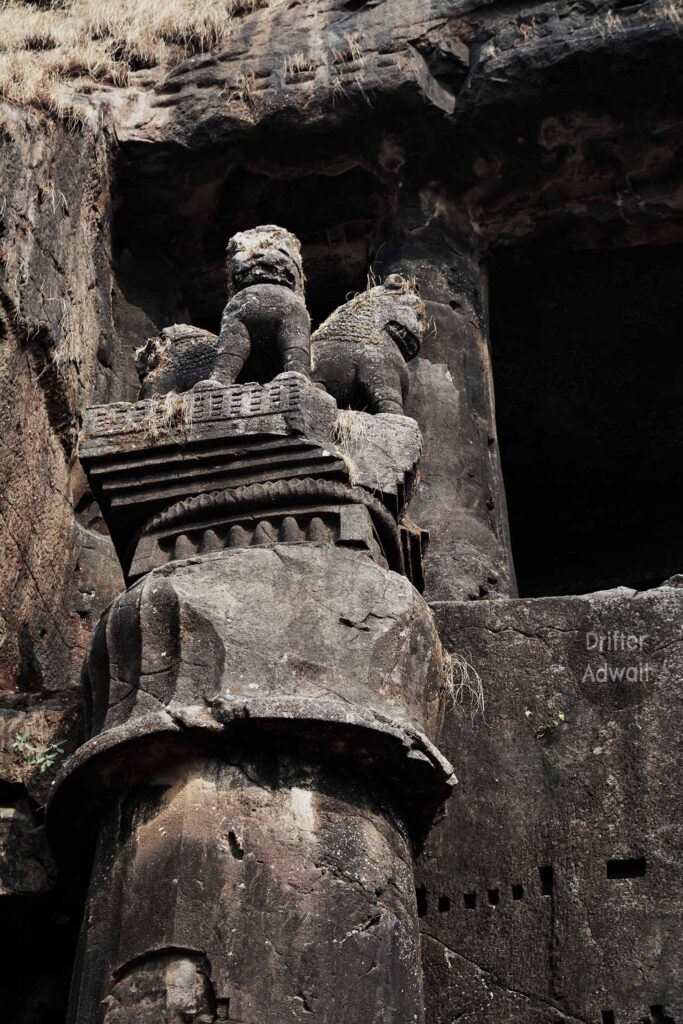
Having a close resemblance to the famous Ashoka pillar, Karla caves has one almost intact Sinha Sthambha, with four full lions depicted on the top. Carved from the single basalt rock of Sahyadri, this 13.5-meter tall pillar has stood tall for over two thousand years, fighting the natural and human elements. It is standing over a circular base with a hexagonal pillar shape, squared Harmika, and four back-to-back lions roaring. According to a few indologists, there might have been a metal Dhammachakra fitted at the center of these lions during ancient times. Who has carved this pillar? You will find answers in the notable inscription section.
ChaityaGruha of Karla caves: Cave 8

The main cave is known as the Great Chaitya Cave or Cave No.8. It has an extensive and beautifully carved prayer hall called a chaitya. The Chaitya is very old and was made around 120 CE. It is the biggest rock-cut Chaitya in India and is 45 meters (148 ft) long and can be as tall as 14 meters (46 ft).
The entrance has three doorways below a balcony. They match the design of our rood-loft. One doorway leads to the center, while the other two lead to the side aisles. Above the balcony, the entire end of the hall is open, like in other Chaitya halls. This creates a large window that lets in all the light. The window above the partition is shaped like a horseshoe and looks similar to the decorative ones on the front of this cave and other caves like Bhaja, Bedsa, and Kondane. These horseshoe shapes are common during this time period. Inside the arch, there is a wooden framework that stands independently.
Fifteen pillars on each side separate the central part of the hall from the side areas surrounding the main Dagoba. Each pillar has a tall base, a shaft with eight sides, and a beautifully decorated top. On the top of each pillar are two elephants, and they carry two figures, usually a man and a woman. Sometimes, there are two female figures instead. These decorations are of higher quality than what is traditionally seen. The seven pillars behind the altar are plain and have eight sides but don’t have a base or a decorated top. The four pillars under the entrance balcony look different from the ones on the sides.
Above all of this is the roof, which has a curved shape, like a semi-circle, but it is slightly raised at the sides to make it taller than its half-diameter. Even today, the roof is adorned with wooden ribs to add decoration.
Noteworthy Inscriptions:

Inscription 1:
On the left end of the verandah of the great Chaitya-cave, on a deep flat molding over the heads of three giant elephants:-
वेजयांतिता सेठीणा भूतपालेना सेलघरं परिनिठापितं जबुदीपम्हि उत्तम।
Translation: Seth Bhútapala, from Vejayanti, has established a rock mansion, the most excellent in Jambudvipn.
Inscription 2:
On the lion-pillar, or sinhastambha, on the left of the entrance:-
महारठिस गोतिपुत्रस अगिमित्रणकस सिहयभी दानं |
Translation: From Agimitrapaks, son of Goti, a great warrior, the gift of a lion-pillar.
Inscription 3:
On the right end of the verandah below the feet of the elephants:-
थेरान भयं तइददेवस हथी च पुवा दो हथिनं च उपरिमा हेथिमा च वेयिकादानं।
Translation: The gift of, first, two elephants, and above and below the elephants, a (rail-pattern) molding, by the venerable reverend (Bhadanta) Indadeva.
Inscription 4:
Over the right-hand side door into the Chaitya –
धेनुकाकटा गंधिकस सिहदतस दानं घरमुघ
Translation: The gift of a door by Sihadata, a perfumer, from Dhenukakata.

Inscription 5:
On the upper frieze to the right of the central door of the Chaitya and outside:-
[1] सिघं रखो वहरातस खतपस नहपानस जाप्रातरा दिनिकपुतेन उसभदावेनात्रे-
[2] गोसत सहसदेण नदिया बणास सुवर्णा[तिरथकरेण दिवाण ब्रह्मणाने च सोळस गा
[3] मदन] पभासे पूततिथे ब्रह्मणाणं अठभायापदेण]गावसापि त्रिसत सहसं [4] दापयेता बलरके लेणवासान पवजितान चातुसिसचस
[5] पापणथ गामी करजिको दतो सवानं[म]सावासितानं
Translation: To the Perfect. Usabhadata, son of Dinika and son-in-law of King Kha- Karata Khatapa Nahapana, the giver of 300,000 cows-having given gold, and being a visitor to the Fartha at the Bansa river; the giver of sixteen villages to gods and Brahmans; at the holy place Pabliksa the giver of eight wives to Brahmans; and who caused 300,000 cows to be given; and who at Valuraka gave the village of Karajaka to the sangha of ascetics from the four quarters residing in the Lena, all dwelling there for the support during the rainy season.
How to reach Karla Caves?
By Road: Karla Caves are located near Lonavala, which is well-connected by road. If you are coming from Mumbai, you can take the Mumbai-Pune Expressway or the Mumbai-Pune Highway and then proceed towards Lonavala. Once you reach Lonavala, you can hire a taxi, take a local bus, or use other local transportation options to get to Karla Caves, approximately 10 kilometers away.
By Rail: Lonavala has its own railway station, and it is well-connected to major cities like Mumbai and Pune. You can board a train from Mumbai or Pune to reach Lonavala. You can hire a taxi from the Lonavala railway station or take a local bus to reach Karla Caves.
By Air: The nearest airport to Karla Caves is Pune International Airport. If you are traveling from within India or internationally, you can book a flight to Pune. From Pune Airport, you can hire a taxi or take a pre-paid taxi service to reach Karla Caves, which is approximately 60 kilometers away.

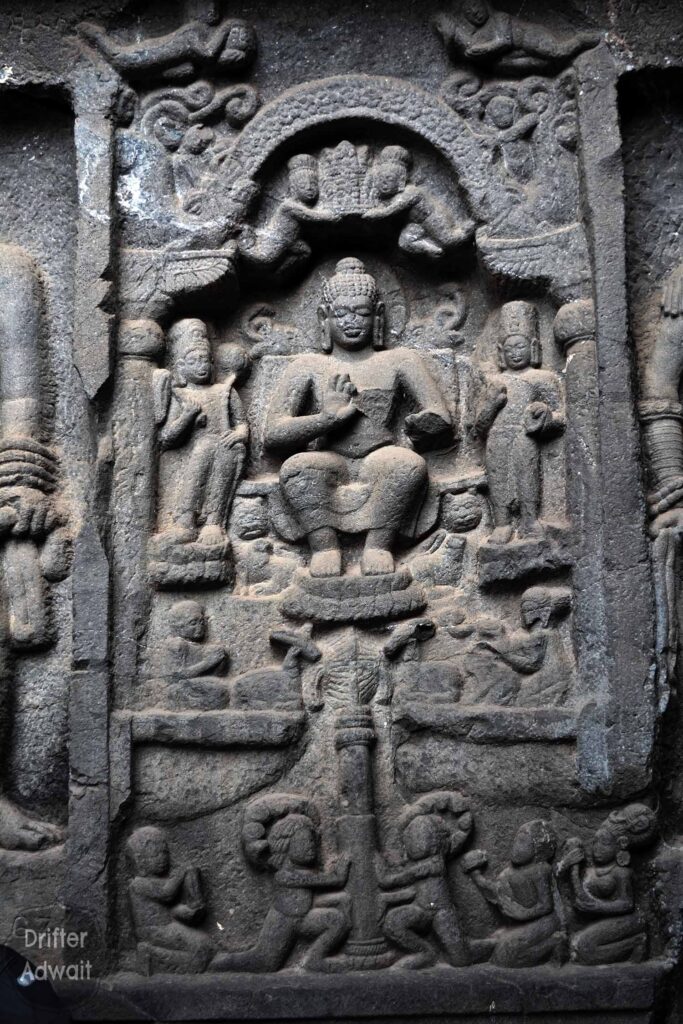
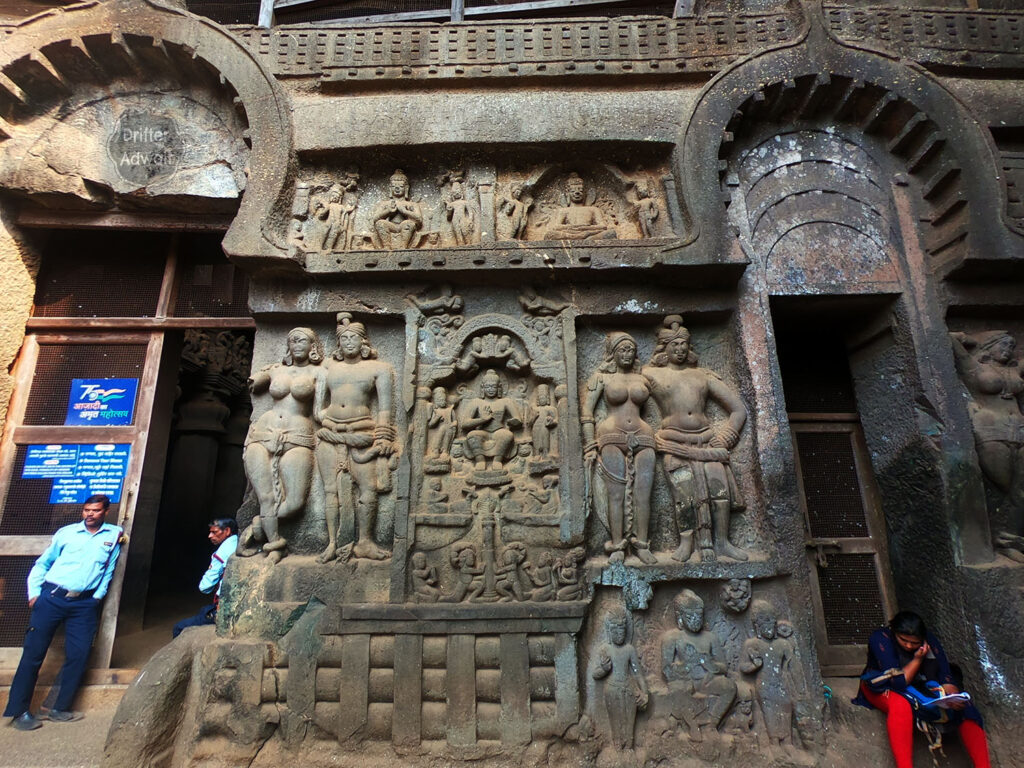

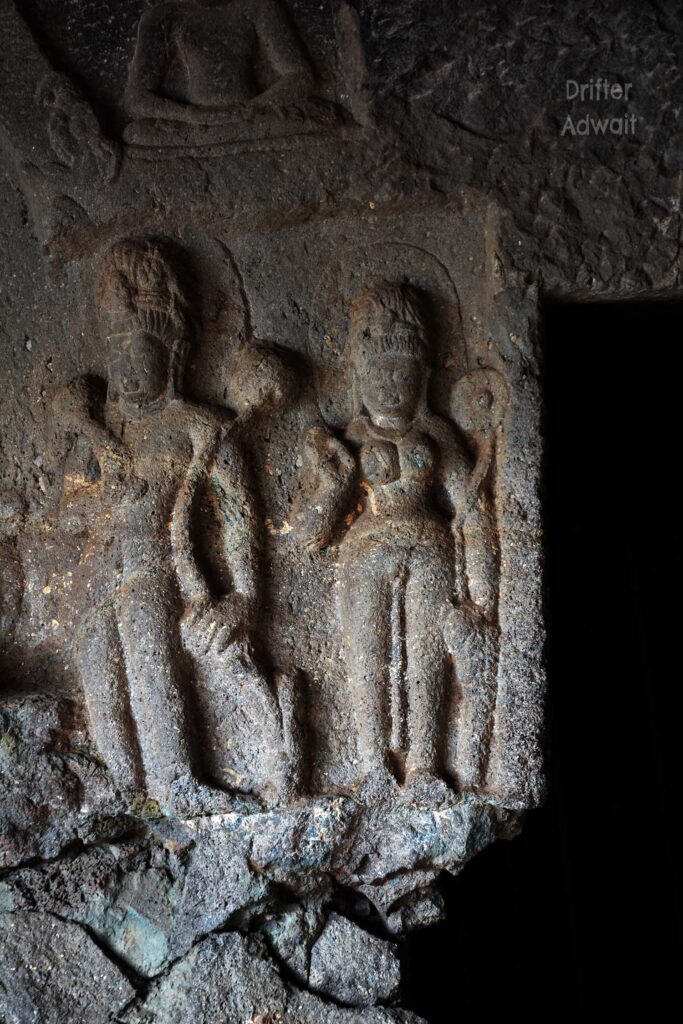


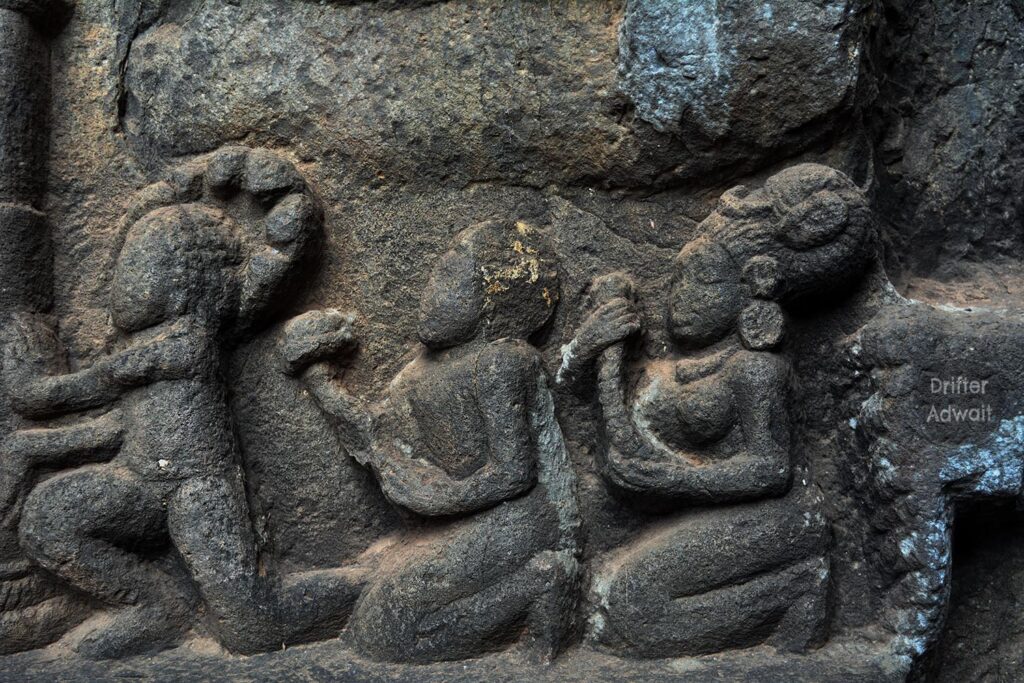
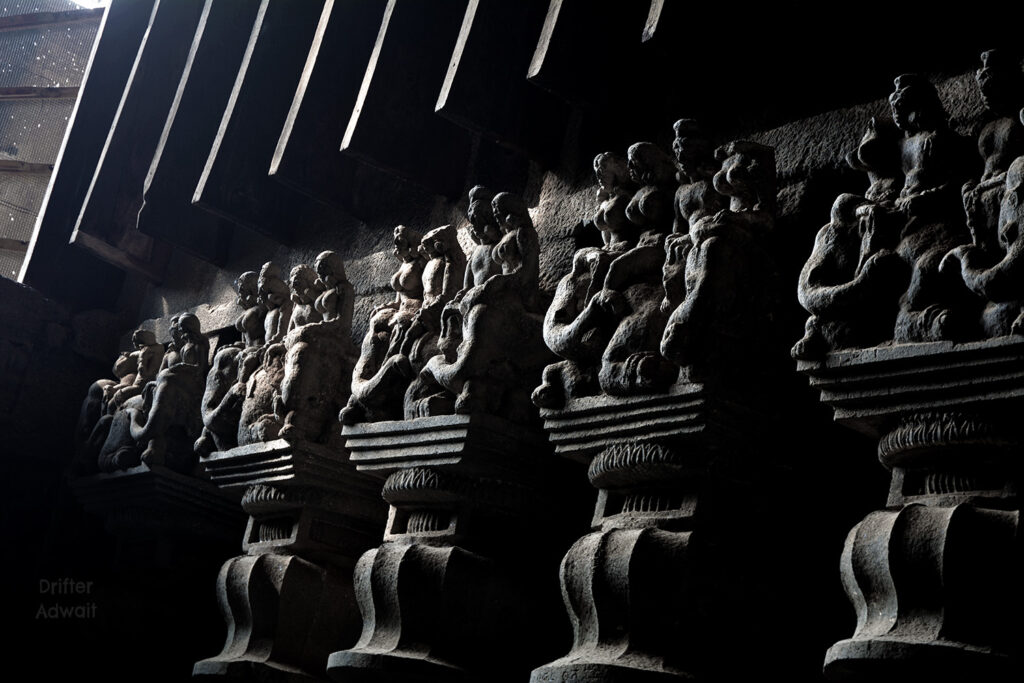
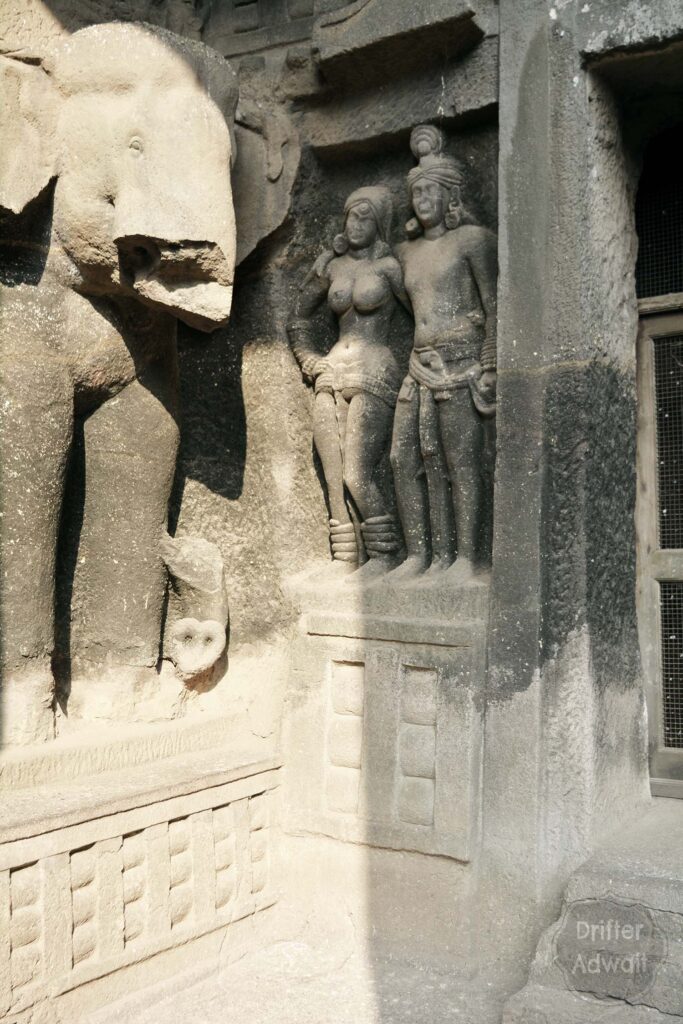
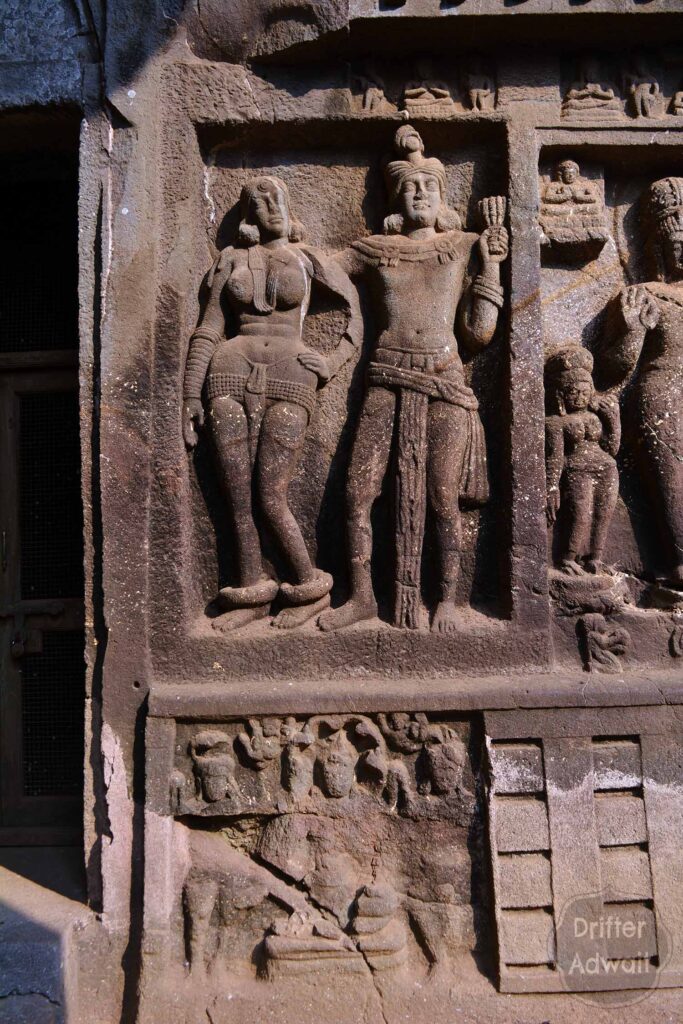
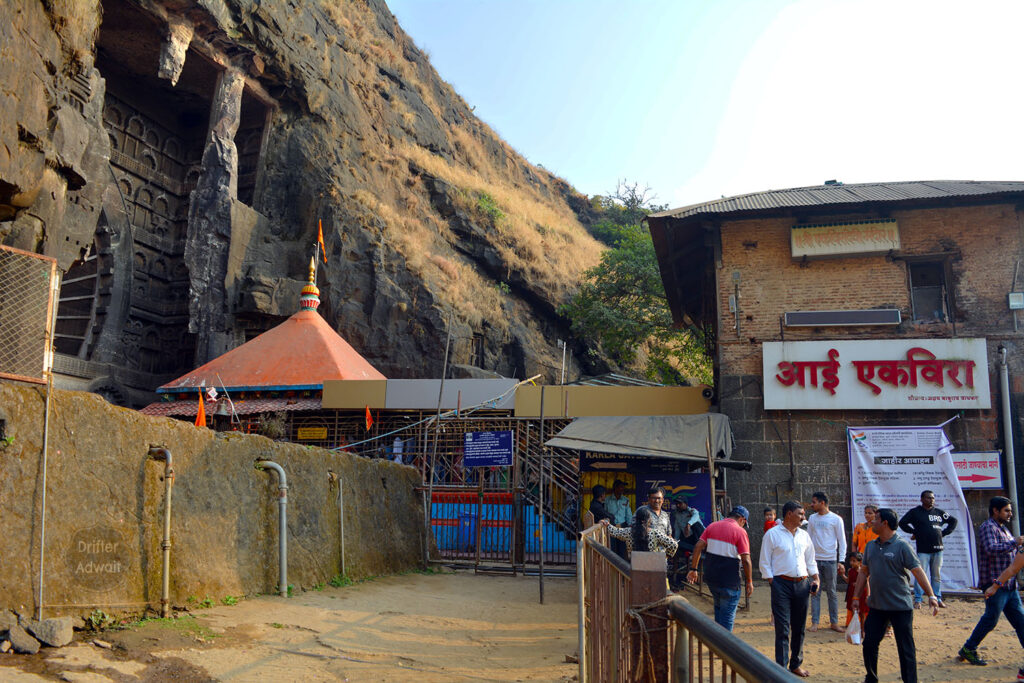
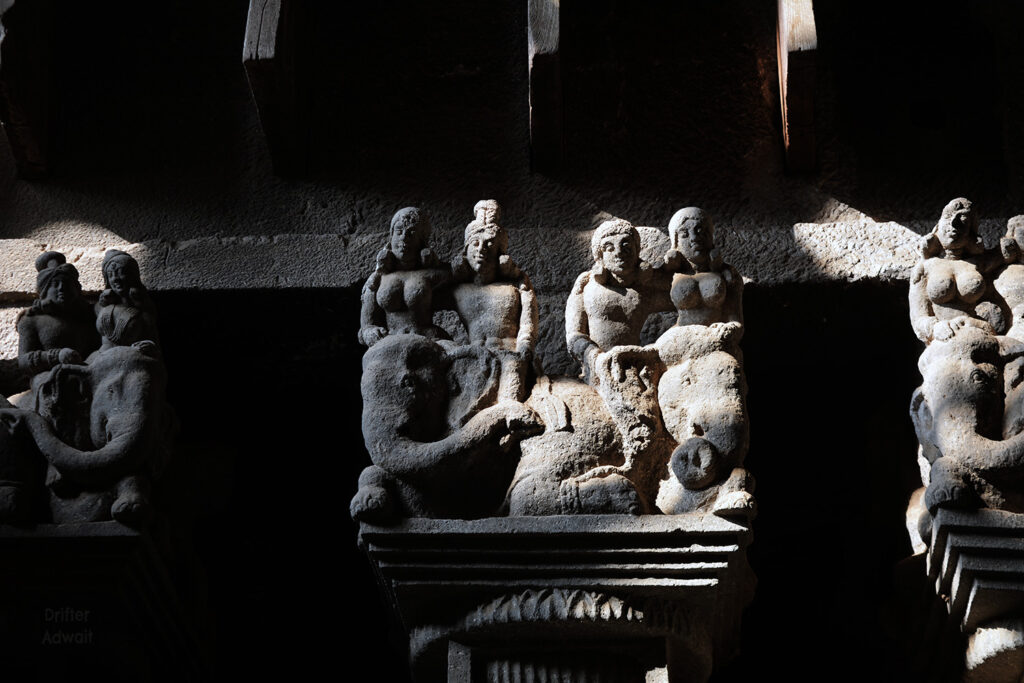
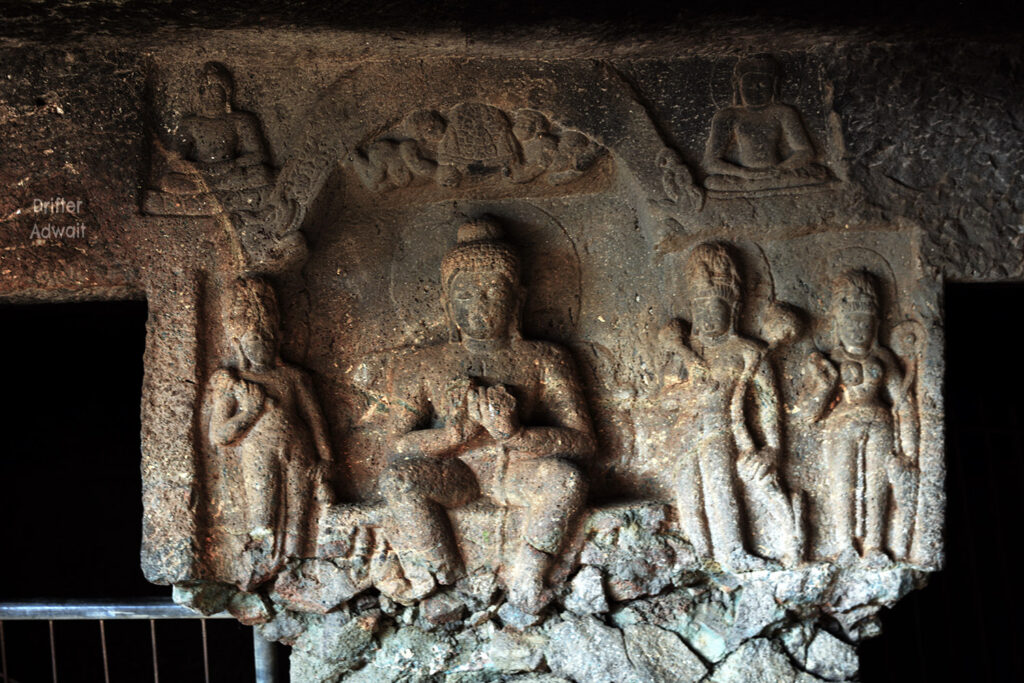
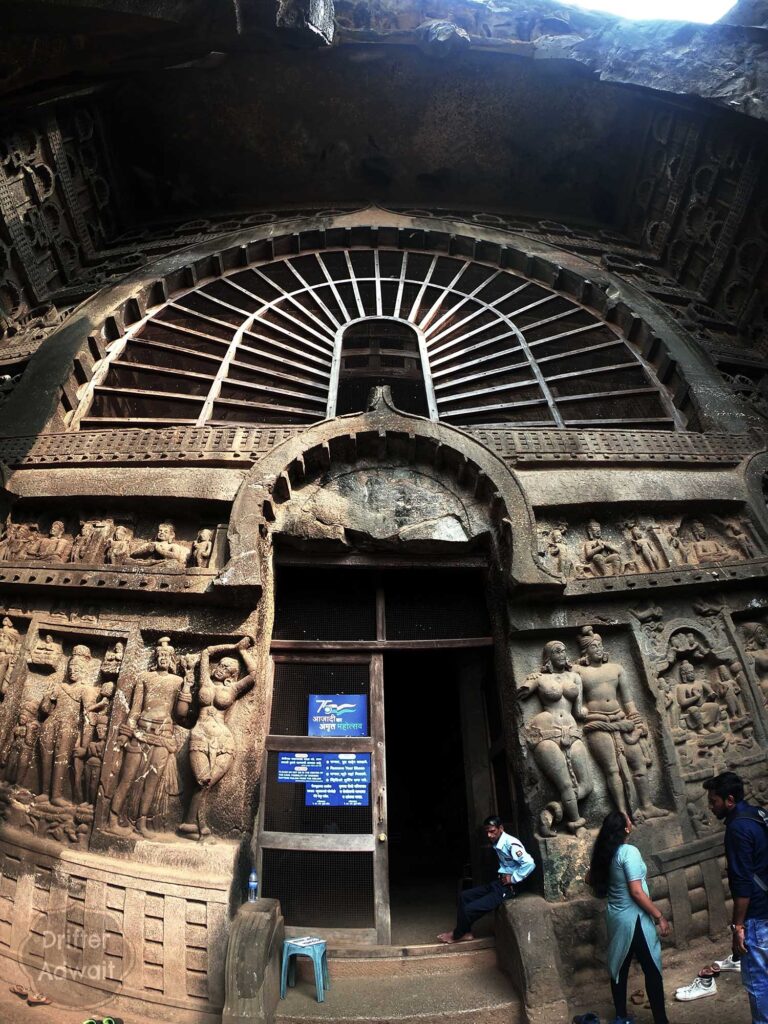
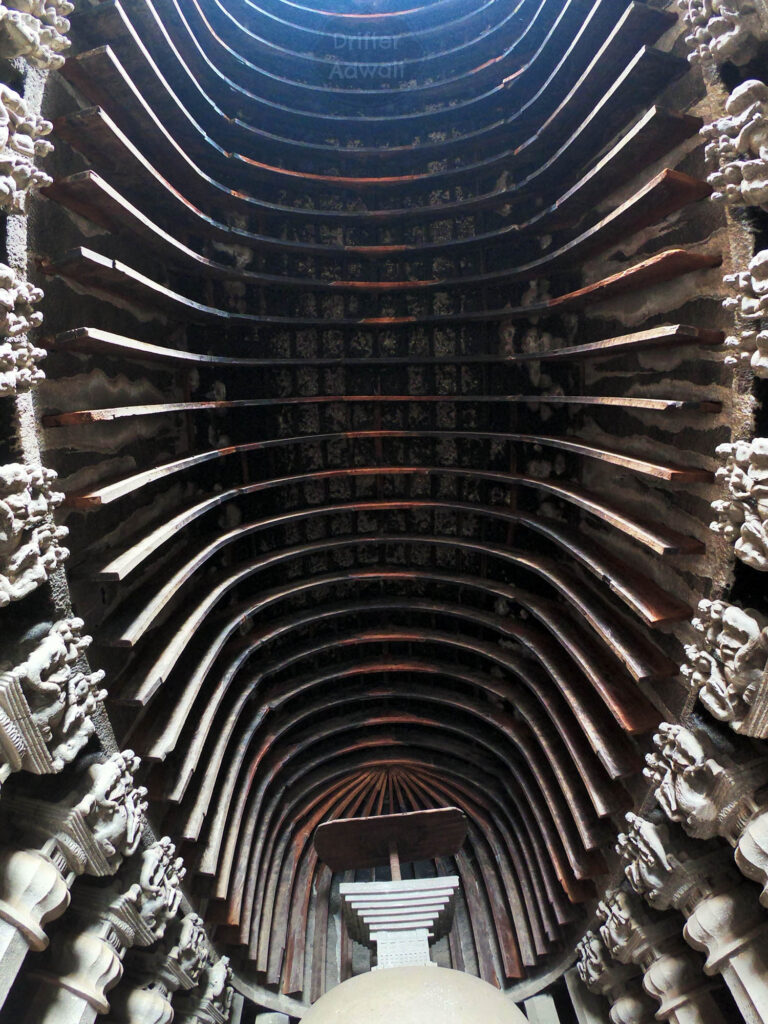
References:
1. Archaeological Survey of Western India. (No X). Inscriptions from the Cave-Temples of Western India: Descriptive Notes, &c. JAS BURGESS, LL.D., M.R.A.S., F.R.G.S., Mem. de la Soc Asiatic Archeological Subnetor and Reporter to Government, & Bhagwanlal Indraji Pandit.
2. Fergusson, J., & Burgess, J. (n.d.). The Cave Temples of India. D.C.L, F.R.S., V.P.R.A.S., F.R.G.S., M.R.A.S., Membre de la Societe Asiatique, etc. Archaeological Surveyor and Reporter to Government, Western India.
3. महाराष्ट्र व गोवे शिलालेख – ताम्रपटांची वर्णनात्मक संदर्भ सूची. (1984). व्यवस्थापक, शासकीय मुद्रणालय व लेखनसामग्री भांडार, कोल्हापूर – ४१६ ००३ यांच्याद्वारे मुद्रित आणि संचालक, शासकीय मुद्रण, लेखनसामग्री व प्रकाशने महाराष्ट्र राज्य, मुंबई – ४०० ००४ यांच्याद्वारे प्रकाशित.
4. लेणी महाराष्ट्राची, प्र के घाणेकर, स्नेहल प्रकाशन, शनिवार पेठ, पुणे ४११०३०, सुधारित आवृत्ती २१ ऑगस्ट २०१६
